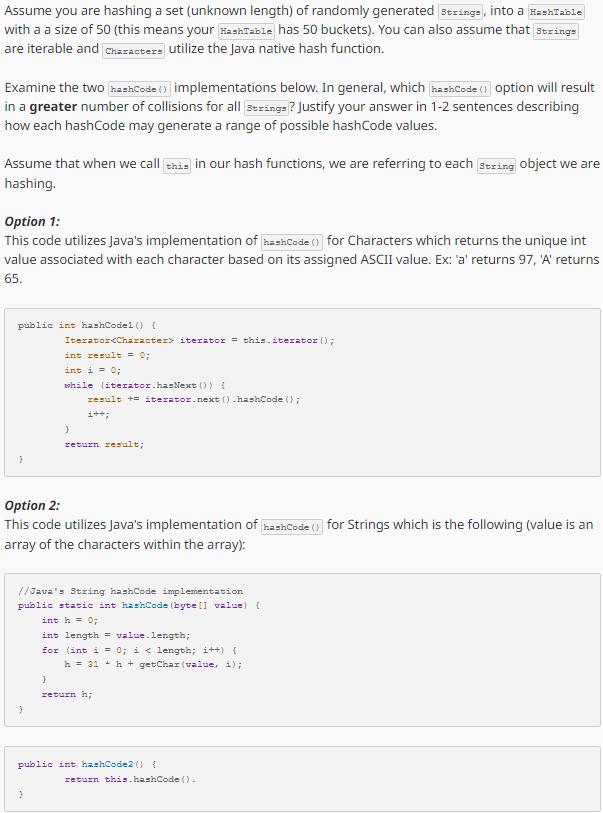Answered step by step
Verified Expert Solution
Question
1 Approved Answer
Assume you are hashing a set (unknown length) of randomly generated Strings, into a HashTable with a a size of 50 (this means your

Assume you are hashing a set (unknown length) of randomly generated Strings, into a HashTable with a a size of 50 (this means your HashTable has 50 buckets). You can also assume that strings are iterable and characters utilize the Java native hash function. Examine the two hashCode() implementations below. In general, which hashCode () option will result in a greater number of collisions for all strings? Justify your answer in 1-2 sentences describing how each hashCode may generate a range of possible hashCode values. Assume that when we call this in our hash functions, we are referring to each string object we are hashing. Option 1: This code utilizes Java's implementation of hashCode () for Characters which returns the unique int value associated with each character based on its assigned ASCII value. Ex: 'a' returns 97, 'A' returns 65. public int hashCodel () { Iterator iterator= this.iterator (); int result = 0; int i = 0; while literator.hasNext ()) { result += iterator.next().hashCode (); i++; } return result; Option 2: This code utilizes Java's implementation of hashCode () for Strings which is the following (value is an array of the characters within the array): //Java's String hashCode implementation public static int hashCode (byte [ value) { int h = 0; int length = value.length; for (int i = 0; i < length; i++) { h = 31 h + getChar (value, i); } return h; public int hashCode2() { return this.hashCode ().
Step by Step Solution
There are 3 Steps involved in it
Step: 1
The two options presented are Using Javas implementation of hashCode for Characters This approach assigns a unique integer value to each character based on its ASCII value For instance a returns 97 an...
Get Instant Access to Expert-Tailored Solutions
See step-by-step solutions with expert insights and AI powered tools for academic success
Step: 2

Step: 3

Ace Your Homework with AI
Get the answers you need in no time with our AI-driven, step-by-step assistance
Get Started


